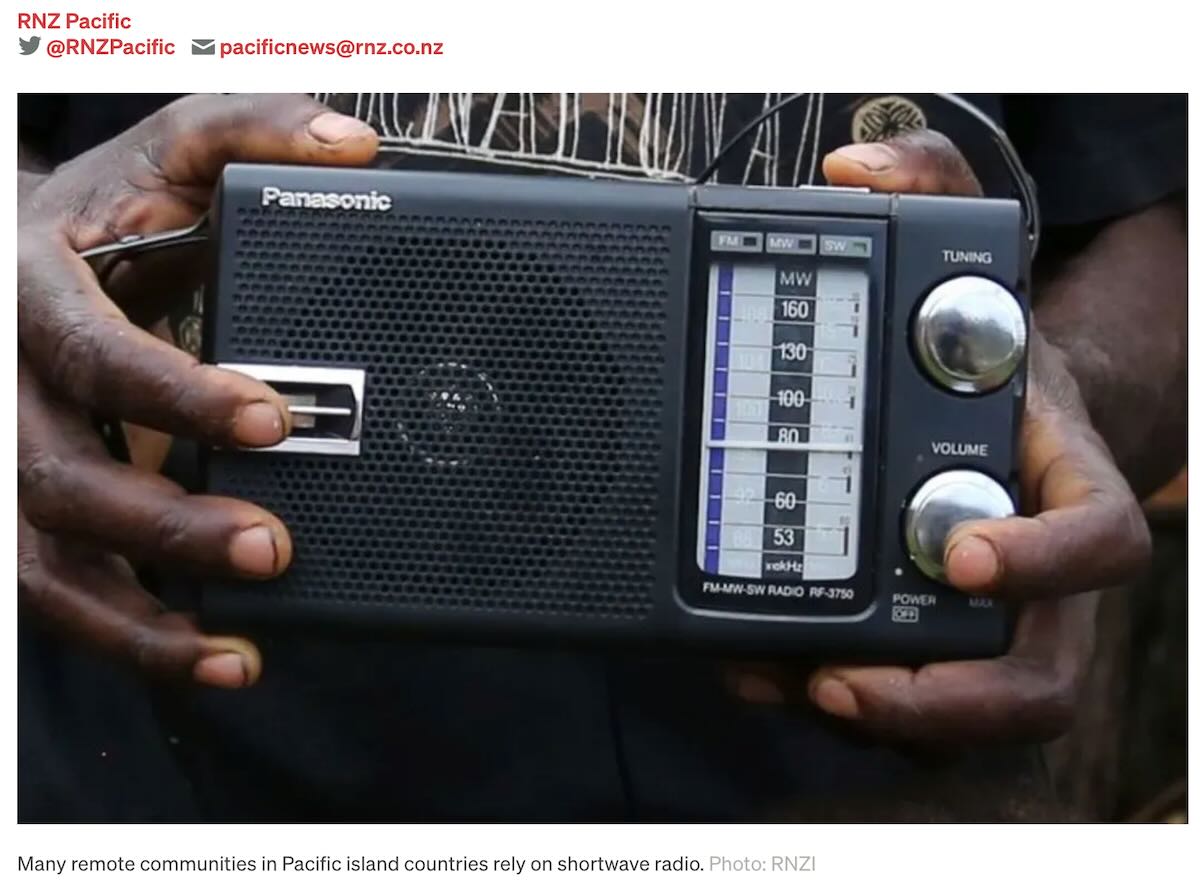Many thanks to SWLing Post contributor Ian Millett (N3CVA), who writes:
Thomas,
This was posted to the RNZ website at 2 pm NZ time November 1.
RNZI announces start of Pacific Cyclone Watch Service
https://www.rnz.co.nz/international/pacific-news/577507/rnz-pacific-cyclone-watch-service-activated
A photo of a shortwave radio in a news article on Radio New Zealand International’s online Pacific page (see screenshot above) caught my attention. It shows someone holding a Panasonic RF-3750 portable FM/MW/SW receiver from the 1990’s (like the one pictured below). The caption reads, “Many remote communities in Pacific island countries rely on shortwave radio.”
The article, titled “RNZ Pacific Cyclone Watch Service activated” is about RNZ Pacific’s Cyclone Watch Service that operates during the South Pacific cyclone season which runs from November 1 through April 2026. RNZ Pacific will broadcast hourly updates from Meteorological services in the region once cyclone alerts are issues. The article reminds readers that when local power grids and broadcasters are down “our broadcasts may be the only updates that people in the Island nations and territories can receive.” It also lists the on-air frequencies for the RNZ Pacific Cyclone Watch Service for the 2025-2026 cyclone season.
I’m glad RNZI is still on shortwave and understands its role in providing these broadcasts of critical information to remote areas. I remember during the 1970s, listening to Pacific cyclone bulletins broadcast by Radio Australia and plotting them on my National Geographic maps. I grew up on an island at the southern end of the Caribbean archipelago and from June to November I was plotting the track of cyclones in my own region, with information from medium stations like Radio Antilles, Montserrat, and Trans World Radio, Bonaire, and of course WWV on shortwave.
Credit for this information goes to RNZI https://www.rnz.co.nz/international/listen











